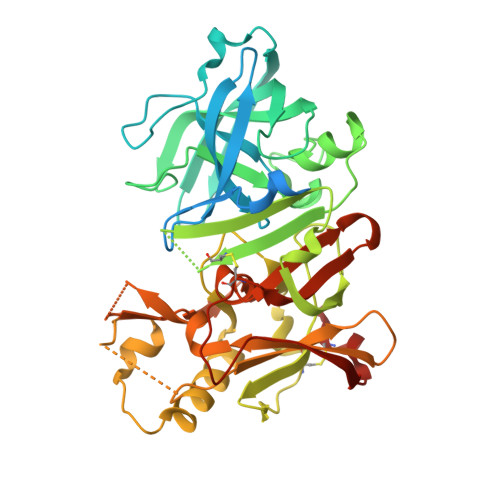Targeting the BACE1 Active Site Flap Leads to a Potent Inhibitor That Elicits Robust Brain A beta Reduction in Rodents.
Wu, Y.J., Guernon, J., Yang, F., Snyder, L., Shi, J., Mcclure, A., Rajamani, R., Park, H., Ng, A., Lewis, H., Chang, C., Camac, D., Toyn, J.H., Ahlijanian, M.K., Albright, C.F., Macor, J.E., Thompson, L.A.(2016) ACS Med Chem Lett 7: 271-276
- PubMed: 26985314
- DOI: https://doi.org/10.1021/acsmedchemlett.5b00432
- Primary Citation of Related Structures:
5ENK, 5ENM - PubMed Abstract:
By targeting the flap backbone of the BACE1 active site, we discovered 6-dimethylisoxazole-substituted biaryl aminothiazine 18 with 34-fold improved BACE1 inhibitory activity over the lead compound 1. The cocrystal structure of 18 bound to the active site indicated two hydrogen-bond interactions between the dimethylisoxazole and threonine 72 and glutamine 73 of the flap. Incorporation of the dimethylisoxazole substitution onto the related aminothiazine carboxamide series led to pyrazine-carboxamide 26 as a very potent BACE1 inhibitor (IC50 < 1 nM). This compound demonstrated robust brain Aβ reduction in rat dose-response studies. Thus, compound 26 may be useful in testing the amyloid hypothesis of Alzheimer's disease.
- Research and Development, Bristol-Myers Squibb Company , 5 Research Parkway, Wallingford, Connecticut 06492-7660, United States.
Organizational Affiliation:



















